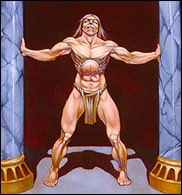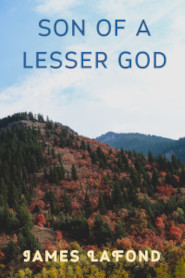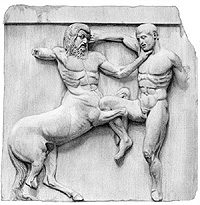I originally became interested in gaming by accident. In 1975 I was a boy who loved tanks. When I saw a box with actual German tank silhouettes on the cover at the toy store I bought it for $9. It was Panzer Blitz, a platoon and company level simulation of combat on the Russian Front. It wasn't until 1976 that I finally learned how to play the thing. Then a friend informed me that there were also games that permitted players to play adventurers. I took one look at my Edgar Rice Burroughs and Robert E. Howard collections of $1.95 paperbacks and said "I'm in!”
For what's it is worth I'm a mediocre gamer, unless we're playing Empires in Arms or you actually let me play the Confederacy in The Civil War by Victory Games. As far as game design I'm good on concepts and maps and weak on development and mechanics. What follows is my meager contribution to the hobby that I have not been able to enjoy nearly as much as I would have liked. If I get old though, I'll be rolling some dice…
From 1980 through 1996 I designed various table top war games: including Shield Wall 1066, Priest Kings and Daimyo. I believe I lacked the development skills [and perhaps the raw intellect] to bring these efforts to fruition. They were interesting designs and I made some really nice maps. But the designs were ambitious and I lacked the development skills to pull off these projects so I scratched them mid way.
I suppose my pursuit of science-fiction, history and hand-to-hand combat arts are actually reflected in my odd impulse to attempt to create simulations for these subjects. My youngest son has recently suggested that I rewrite some of the things that I produced and/or published in the 1980s and 1990s. What follows is an outline of the games I managed to design for publication and the role-playing material I produced in this period. To a large extent this is how I learned to write for publication, and I owe Stewart Wieck , Steve Sechi, Lou Zocchi and Daniel Kipp a great deal for their creative, editorial and marketing advice.
- Tyrants of Yitar 1988, self-published, 35 copies produced by photocopier (30 sold). This was a one-play fantasy game designed to be purchased and played at game conventions. The players each take the role of a petty tyrant of a warring valley. The objective is to become Pontiff of Yitar before the barbarian hordes arrive and exterminate everyone. The Pontiff will at least be assured his place in Paradise. The losers simply become barbarian resources of either the portable, flammable or decorative variety. 8-1/2 by 11 map, 8-page rule and event booklet, 25 cutout counters, $2.45
- Pizza Wars 1988, self-published, 1,750 copies printed (1,700 sold). This is a board game played with a pizza, using slices as territories to be fought over and toppings as armies to be maneuvered around the pizza with toothpicks. This began as a joke and I could not believe it when it took off as a game that people really played. After play-testing the thing I didn't eat Pizza for years. 4-page illustrated pamphlet, $1.95
- Pizza Wars Imperium Self-published, 1,750 copies printed (1,720 sold). This was an elaborate version of Pizza Wars with special ability rules for the various toppings, and optional rules for terrain and genocide. Richard Thomas did such a nice job illustrating the various topping-inspired races of combatants for this brutal pizza-top world that some role-players even wrote the author claiming that they used the Imperium as a setting for their campaigns. 22-page illustrated booklet, $3.95
- Keepers of the Law 1988, White Wolf Magazine #12, pages 40-42. This offered a system of law and a monastic order to act as a judiciary, loosely based on the Inquisition and Gene Wolf's Shadow of the Torturer novel. It is pretty dry reading but there were only 2 typos and the structure was not bad. I only yawned twice in three pages.
- Tribes Volume One, 1989, 40 copies produced by photocopier (34 sold). Upon deciding to create a hypothetical future Earth I employed the following mental exercise: instead of asking James-whoever-that-guy-is-from-Baltimore what Earth might look like after 250,000,000 years how about if I asked Edgar Allen Poe and Sigmund Freud…but not before sitting them down in a poorly lit room with enough booze for Edgar and enough cocaine for Sigmund. This resulted in a fairly dark world which it would be the author's task to illuminate. Tribes was serialized through ads in a couple of small publications. Richard Thomas and Joseph Bellofatto did a wonderful job illustrating the series. But I could not afford a proper production or marketing effort so it was doomed. Fortunately it received some good reviews in magazines and at conventions and Steve Sechi of Bard Games offered me a book deal. Five 14-19 page 8-1/2 by 11 booklets, $3 each or $13 per the set.
- Tribes Thunder Seed, 1990, unpublished. I wrote this setting for the FRP magazine market. It was rejected. It had some interesting elements, but upon rereading it I would have rejected it too. No, you can't read it, it sucks. 15-page double-spaced manuscript
- Terra Australis Incognito 1990, unpublished. After spending a few months researching the early modern European beliefs in a great unknown southern landmass—then thought necessary to balance the northern landmasses—named Terra Australis Incognito I decided to design a role-playing setting set in 1861 based on the premise that this had been the case. Stewart and I both thought it was a fun idea but agreed that younger role-players would really not be into it. I might write it as a novel some day. All that remains is a map. The notes and synopsis are missing.
- Gods of Hur 1991, unpublished. This was another science-fiction setting written for a proposed series of campaign books to be published by White Wolf. Stewart sent me a nice rejection letter. I just reread it and I don't like it [the article I mean—the rejection letter was very nicely done] though the premise was good; another example of not having the development talent to pull off a good design. 8-page double-spaced manuscript
- Pizza Wars 101 1991, self-published, 100 promotional copies. This was a placemat design intended to promote the upcoming Pizza Wars Apocalypse. This is really all you need [besides dice, toothpicks and antacid] to play with your pizza. I have to admit, that this was a lot of lowbrow fun.
- Pizza Wars Apocalypse 1991, unpublished. I think this is when I found out that my wife was pregnant. By 1994 I was working six [yes that's 6] jobs. I still have the illustrations by Richard Thomas and may one day rewrite it for publication. 18-page double-spaced illustrated manuscript
- Pizza Krieg 1991, 200 copies. A Belgian guy living in Germany (I lost our correspondence) bought the German language rights to Pizza Wars and actually sent me a copy of the game, in a painted pizza box with dice and toothpicks, and even a pamphlet describing what a pizza was and how to make one if you did not live near a pizza shop!
- What's In A Name? 1992, unpublished. Barring a few composition flaws this is the best piece I had written to date. For four pages I discussed the usefulness of developing parallel naming traditions for a role-playing setting. I thought it was pretty good stuff, and then I turned to page five and that was it, a list [with no explanations] of seven generic naming templates. Are you kidding me LaFond!?! I don't even know if I submitted it to anyone. 5-page double-spaced manuscript
- Tribes 1993, unpublished. Having finally produced the Tribes sourcebook for Bard Games, Steve informed me that he was selling off his business. He did write a nice foreword for the book and put me in touch with the company who bought him out, but this stuff was too gory for them. Besides, I was still using a typewriter. 201-page double-spaced illustrated hardcopy
- Galactic Gluttons 1994, Strategic Castle Publications (by Daniel Kipp and Anthony Bainer). I just came up with the title. The guys that owned the Strategic Castle game store on Tollgate Road in Belair Maryland wrote and published this. I don't know how many they sold but I still have my free copy. 6-page pamphlet
Note: in 1994, according to my surviving letters, I was negotiating licensing deals for Pizza Wars with an Italian game designer who wrote on plush cotton-base letterhead and Lou Zocchi of Gamscience, a genius who designed a many sided dice and once won an award for a game he designed in the 1970s. If I recall correctly he woke me up with a phone call about making sure I put rules for pineapple in the next Pizza Wars game. I still have both copies of the contract he sent me so it appears we didn't agree on a deal.
I was working 113 hours a week basically lifting stuff and had given up writing by this point. Fortune—for the starving writer within—soon struck, in the form of a catastrophic back injury that eventually cost me my house, two cars, one girlfriend and a wife. Yeah, I think that's the correct order.
- Tribes 1995, unpublished. This combined Steve's foreword, the book, and the five serials into one package. I submitted it to three publishers and got the following responses: ‘nice-but-too-nasty'; ‘we don't do this stuff anymore'; and ‘who are you again, and do you know what a computer is'. Dan Kipp began helping develop this as a role-playing game and then we both got really busy. I still have seven pages of his correspondence concerning the project. This is really too much material for me to read right now. I know the illustrations are very good. My guess is that the gaming material needs to be discarded and the source material rewritten. When I finally rewrite it expect it to be published as a PDF.
- Peopling a Fantasy World 1995, unpublished. This is big chunky article rejected by White Wolf. 8-page double-spaced manuscript with tables
- A Way With Names 1995, accepted for publication by White Wolf Magazine, 2/6/95. It was nice to find an acceptance letter among all of those rejected articles. I heard in the late 1990s that someone had read this article online and it was attributed to me. I do not, however, remember getting my nickel a word or the free copy. I actually think White Wolf Magazine went out of publication before this article got into print. In any case, I have the manuscript. Essentially this is the second half of What's In A Name written in 1992. It has some of the same structural problems. Honestly, I don't see it standing well on its own without the one I wrote earlier as an introduction. It is obvious that I have internalized the advice put forward in these pieces in writing the Sunset Saga. This might be worth a re-write. 5-page double-spaced manuscript
- Fights: Gritty Scraps & Epic Brawls Unpublished. This was written with the intention of self-publishing. I ran into development problems and scrapped it. It was basically a table-top paper and dice fight simulation similar to what is being done on Spike's Deadliest Warrior show. If I can get some help with development I might rework the scraps into a combat-oriented role-playing game. It was at this point that my mind became more interested in researching combat arts and contemporary violence. Looked at from a 2011 vantage point this half-hearted design attempt looks almost like a departure point for a mind gradually becoming seduced by violence into the non-fiction work that would obsess me from January 1996 until June of 2000. 29-page single-spaced indexed manuscript
- Triumph RPG 2012, unpublished role playing game, sent out for playtesting in September 2012, projected publication January 2014.
At some point I intend to rewrite and complete some of the material above. I do possess some nice artwork that should not go to waste. Richard and Joseph's work in support of my odd flights of fantasy still remains to be illuminated. When it is done it should be available here.











